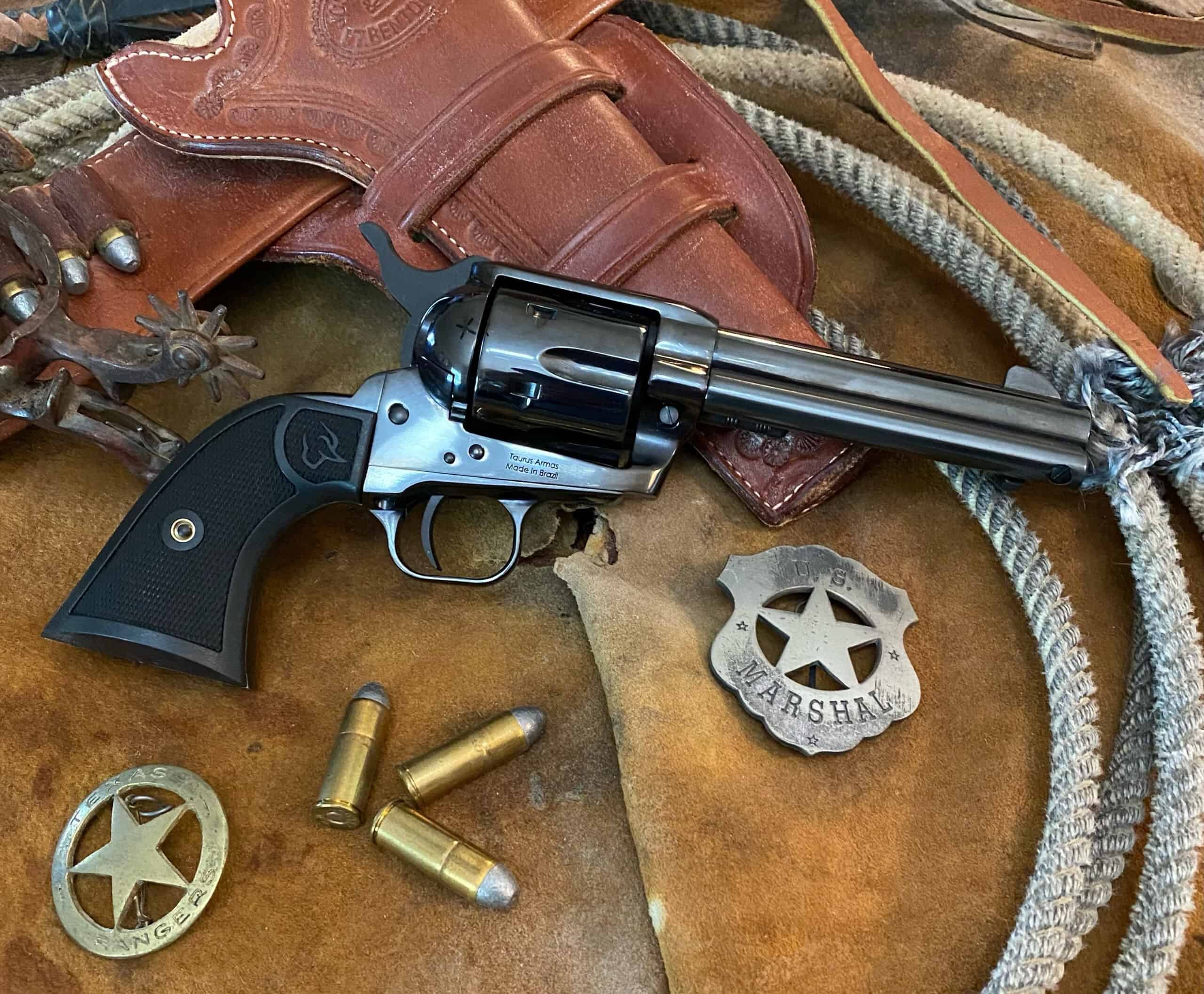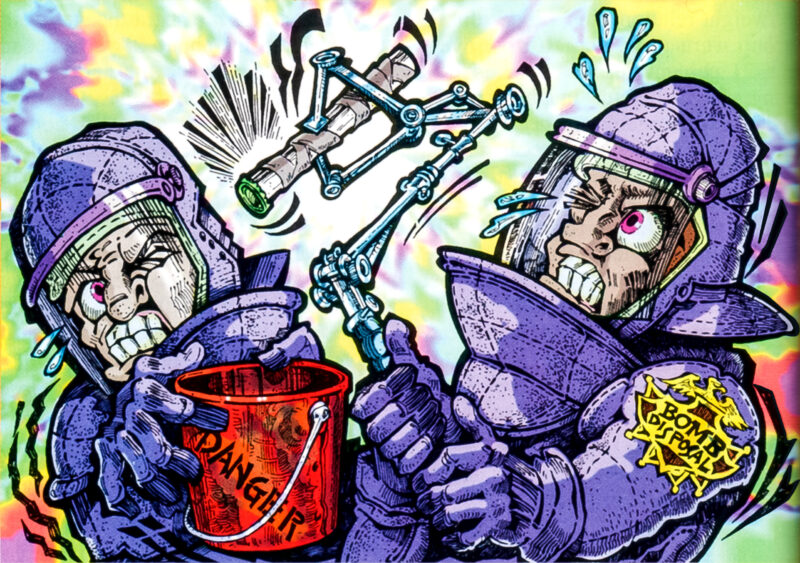Past Masters Of The
DA Sixgun Part 3
Jelly Bryce And “Fitz.”
From the 1920’s to the 1970’s, the double-action sixgun was definitely The King, and there were many men who raised its use to both high art and science. As a kid, never did I imagine I would actually know many of these sixgunners.
Delf A. “Jelly” Bryce was one of those seldom-encountered natural-born shooters and in fact one of the best instinctive shooters ever known. By “instinctive” it’s meant shooting without sights, shooting from the hip with almost unbelievable speed. His law-enforcement career began in 1927 with the Oklahoma State Game & Fish Commission. One year later he joined the Oklahoma City Police Department where he would spend the early 1930’s.
Jelly Bryce
Delf Bryce’s nickname came about because of the way he dressed. Three-piece suits, a vest, spats and a hat with a turned-down brim were his normal attire. Older shooters will recall this is the way George Raft dressed in most of his movies and in fact many saw the resemblance between Raft and Bryce. At the time anyone who dressed to the hilt was known as a “jelly bean” and the name Jelly stuck. Throughout his career he would continue to be a fastidious dresser and in fact, when he later joined the FBI, this became standard operating procedure for agents who were dissuaded from ever being seen without their suit coat.
The Roaring ’20’s was the decade of Prohibition and saw the rise of some of the most famous criminals the United States has ever known. With the coming of the automobile, bank robberies and fast getaways became commonplace. At the time law enforcement had several choices as to sidearms. Both Colt and Smith & Wesson produced standard .38 Specials as the Official Police and Military & Police respectively; the 1911 chambered in .38 Super arrived in 1929 and was then followed by the S&W .38/44 Heavy Duty in 1930. Jelly passed over all of these and his choice for duty use was the S&W Model 1926 chambered in .44 Special. This was the model ordered by the Texas distributor Wolf & Klar in late 1926 which restored the enclosed ejector housing to the S&W .44 Hand Ejectors. It was said Jelly could trigger off five shots so fast they sounded like one and he could hit when he was aiming from the hip. In fact, in one episode when he opened the door looking for a criminal he came upon the bad guy with a semi-automatic in each hand. The bad guy never got off a shot.
In 1934 Jelly Bryce joined the FBI and apparently got along famously with J. Edgar Hoover. One year later S&W brought out the .357 Magnum and legend at least has it Jelly Bryce had one of the first examples. However, there are no records to substantiate this. We do know the first 8-3/4-inch registered .357 Magnum went to Hoover and then shorter barrel versions became the favored sidearm of the FBI agents.
These were the formative years of the FBI and Jelly Bryce developed the firearms training program for agents. Who knows how many agents owed their life to the training they received at the hands of Jelly Bryce. In the mid-1940’s Jelly was featured in Life magazine twice with photographic evidence of his speed with his .357 Magnum sixgun. He developed a special holster and it was said he could not only beat the “drop the dollar”—which really means starting with a silver dollar on the back of the firing hand and then drawing and firing before it hit the ground—Jelly could draw and fire before it passed the level of his holster.
“Fitz” Fitzgerald
From 1918 until 1944 John Henry “Fitz” Fitzgerald was the face of Colt, their goodwill ambassador, and expert at tuning Colt revolvers and semi-automatic pistols. There are many classic books from the 1930’s, however Fitz came first. Great books from this era include Burning Powder by Col. Doug Wesson (1932), Sixgun Cartridges & Loads, Elmer Keith (1936), Ed McGivern’s Fast and Fancy Revolver Shooting and Charlie Askins’ The Art of Handgun Shooting (both from 1939).
Fitz knew these men; it would probably be more correct to say they all knew him. His monumental work Shooting was published in 1930. Fitz’s book is certainly dated, being over 80 years old, as are the others also. However, guns and cartridges may change, but basics remain the same. When reading through Fitz’s book, especially the sections concerning quick draw, self-defense, and police techniques, I thought I saw a lot of Clint Smith and Mas Ayoob in those old pages. Perhaps I have it backwards and instead see a lot of Fitz in their writings.
Everybody who had anything to do with handguns knew Fitz. In his excellent book The Secrets of Double-Action Shooting, Bob Nichols paid eloquent tribute to Fitz who had passed on 5 years earlier, writing, “I knew the late John Henry Fitzgerald well. He was the fastest man on the draw in the world. Here was the famous Fitz of Colt’s. A rattlesnake could be first to the strike, but I never saw anything on two legs who could do the same…. In his book, Fitz came as close as he dared to telling the truth about double action shooting. Fitz knew the deadly accuracy and speed of double action shooting; make no mistake about this. His great Colt’s concern just did not make the best American double action revolver, that’s all. And Fitz knew this, too… Fitz was the most colorful personality, the greatest showman and the greatest salesman Colt’s ever had after the death of Col. Sam Colt. Fitz was Mr. Colt for the 27 years preceding his death. He was immensely popular with, and respected by, law enforcement officers the country over, and even in Canada.”
It is most interesting to me to read Nichols’ statement about Fitz knowing the Colt was second-best compared to S&W, but Fitz was loyal to Colt and both quick and accurate with his .45 Colt New Service sixguns. Nichols shares again: “Fitz was absolutely deadly in the speed of his double draw. Those of you who have seen it will know what I mean. Fitz’s double draw with his two altered Colt .45 FitzGerald Specials seem just about as fast as you could wink your eye…. Mr. Colt was quite a guy. Along with the million or so other pistolmen, I thought the world of him. I had the advantage, however, of knowing Fitz a little better than most others among the million or so. Fitz was a Big Gun indeed in the latter era of the tremendous Colt tradition.”
The sixguns Nichols refers to in Fitz’s double draw was a pair of specially altered .45 Colt New Services, which were carried in his front trouser pockets. These were not ordinary New Services, which is a large double-action sixgun by anyone’s definition. They do not fit easily into a pants pocket, so Fitz made them fit. Barrels were cut back to 2 inches, the grip frame was shortened, the hammer was bobbed so it would not catch on clothing, however enough was left so an expert at double action shooting could start the hammer back with the trigger action and then use the thumb to cock it for deliberate single-action fire. The final touch is something shooters have been arguing about ever since the first Fitz Special was created. For quick access to the trigger, Fitz cut out the front of the triggerguard.
By 1890 Fitz, though still a teenager, became fascinated with ballistics going so far as to actually examine the rifling marks on bullets. In the future he would be known as an expert witness in forensic tests testifying in hundreds of trials as well as being a consultant in over a thousand cases. He considered himself to be “half-cop” instructing and lecturing to police departments all around the country and was actually affiliated with several law enforcement organizations. Just as his friend Col. Rex Applegate would later do, Fitz not only instructed in the use of firearms but also techniques to use when unarmed. He had been a prizefighter in his youth so was well qualified for the latter. He was a firm believer and proponent of DA shooting. As Colt’s Ambassador he was always in the Colt tent at the Camp Perry National Matches ready to share with other shooters as well as tune their Colt pistols and revolvers.
All serious handgun shooters today know of and also use some form of Jack Weaver’s Weaver Stance. In modern times it was championed by Weaver in the 1960’s and promoted by Jeff Cooper. I’ve always maintained the Weaver Stance or some form thereof goes back at least as early as 1847 when the first Texas Ranger tried to shoot a 4-1/2-pound Walker Colt. Fitz did a lot of double action work shooting two sixguns simultaneously but he also believed in being able to hit at longer ranges. To this end he was using two hands for shooting one gun nearly a half-century before Cooper and Weaver. When Fitz wrote his only book, the .357 Magnum was still five years in the future.
Just as the writings of all the old masters of the handgun Fitz’s work is dated in many ways but it is also as modern as today. Elmer Keith, Ed McGivern, Charlie Askins, Rex Applegate, and most assuredly John Henry Fitzgerald all have much to teach us still. We will never see their like again.





